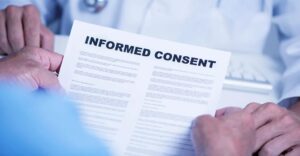First-generation antipsychotics
Overview
For many years, first-generation antipsychotics were the accepted treatment for psychotic illnesses. They belong to an earlier class of antipsychotics. These older antipsychotics are often referred to as standard or traditional antipsychotics, as opposed to a more recent class of second-generation antipsychotics, because their range of therapeutic action is more limited. Additionally, the traditional antipsychotics are as follows:
Lacking the tolerance of the more recent antipsychotics, they are associated with several adverse effects. However, because they are safe and effective, traditional antipsychotics will always have a role in the treatment of psychological issues.
The Mechanism of Action of Antipsychotics
The dopamine receptor antagonist theory might provide an explanation for the effects of antipsychotic drugs. Neurotransmitters, such as dopamine, are chemicals produced by neurons in the brain that allow neurons to converse with one another. A single neuron releases dopamine into the area between it and the next neuron, where it attaches itself to certain locations known as receptors on the other neuron. When a neurotransmitter and receptor combine, the neuron codes for very specific actions, which eventually produces an electrical signal that travels through the nerve cell. Near the nerve’s terminus, Dopamine is released further as a result of the electrical impulse. This method of correspondence between neurons and It’s referred to as neurotransmission. Excessive dopamine neurotransmission in certain brain regions may generate the psychotic symptoms that are indicative of schizophrenia, such as delusions, hallucinations, and odd behavior and more severe bipolar illness instances. For example, drugs like cocaine and amphetamine are well recognized to boost the release of dopamine. When used in excess, these medications cause symptoms of psychosis similar to schizophrenia.
Commonly seen psychotic symptoms in schizophrenia and other mental illnesses including bipolar disorder, delusions, hallucinations, disordered speech, and drug-induced psychosis are among the symptoms of order, dementia, and strange, frenzied, or immobile conduct. These signs are often referred to as the good signs of psychosis due to their clinical presentation’s extreme and overt character.
Antipsychotics primarily function by opposing or reducing dopamine’s activity at its receptors, lowering the chemical messengers that fuel psychotic conduct. Antipsychotics, in other words, reduce neurotransmission via preventing the binding of dopamine to the receptors. excessive dopaminergic activity in some brain regions might be the fundamental reason for psychosis. Antipsychotics of the first and second generations include dopamine antagonists, making them useful in the management of psychosis’s positive symptoms. Antipsychotics may have adverse effects in areas of the brain where they have no therapeutic advantages.
Typical Side Effects
Typical adverse effects of traditional antipsychotics include drowsiness and extrapyramidal symptoms, orthostatic hypotension, weight gain, increased prolactin levels, anticholinergic effects, and (EPS) While sedation and fatigue are significant side effects of all antipsychotics, the low-potency traditional antipsychotics. Higher-potency antipsychotics like thioridazine and chlorpromazine tend to be less sedative overall.
Substances, including (haloperidol) and fluphenazine. Sedation may sometimes be helpful in reducing agitation. They aid in the patient’s sleep, yet far too often patients encounter intolerable daytime drowsiness and exhaustion.
Antipsychotics may produce neurological problems called extrapyramidal symptoms, or a neurological illness in the part of the brain responsible for managing motor coordination. First-generation, very potent antipsychotics Compared to lower-potency drugs, like fluphenazine and Haldol have a higher propensity to cause EPS. Antipsychotics may have side effects that resemble those of Parkinson’s disease. They result in symptoms similar to Parkinson’s (parkinsonism) that manifest as tremor, drooling, stiffness in the muscles, and a “mask-like” facial expression.
Nevertheless, in contrast to Parkinson’s disease, a neurological condition that progresses, parkinsonism resulting from antipsychotic drugs are reversible. It may be avoided and treated with antiparkinsonian medications, commonly known as anticholinergic medications, as benztropine-containing Cogentin, diphenhydramine-containing Benadryl, and trihexyphenidyl and procyclidine-containing Kemadrin.
Another kind of EPS is akathisia, which is defined as a subjective feeling of restlessness along with fidgeting, restlessness, anxiety, soreness in the muscles, and restlessness. Antiparkinsonian drugs are typically inadequate for the treatment of akathisia. Using the beta-blocker Inderal (propranolol) might be beneficial.
One kind of EPS with an abrupt onset is dystonia. It appears as an abrupt spasm of the muscles in the jaw, neck, and tongue. There isn’t an allergy to the antipsychotic drug causing this. A quick fix for a tonic response, which may be unpleasant and terrifying, is to inject an
anticholinergic drugs, such as Benadryl or Cogentin. When a patient has a dystonic response, they should Get treated right away and obtain medical care.
Prolactin elevation is a typical side effect of traditional antipsychotics. One hormone that is produced in the pituitary gland, a region of the brain. It is often higher among women who have just given birth promoting the production of milk, or lactation. Antipsychotic drug-induced prolactin hyperproduction may cause both men and women to experience breast enlargement and milk production (galactorrhea). Increasing prolactin is further linked to irregular menstrual periods or the lack of menstruation in women, as well as impotence in males.
Alternatively, if uncomfortable side effects from high prolactin levels occur, you might go to one of the drugs of the second generation of antipsychotics, which do not increase prolactin. A common adverse effect of all antipsychotic drugs is weight gain. Specific antipsychotics are connected with some gaining more weight than others. It’s unclear whether there is a metabolic shift at play here either as a result of an increased hunger or the antipsychotic. Throughout treatment, weight should be regularly evaluated, and If there is weight gain, diet and exercise should be the first steps in an intervention program.
Antipsychotics prevent cholinergic neurons in the nervous system from acting as they normally would cause annoying adverse effects of anticholinergic drugs. Cholinergic inhibition affects an organ system, and it has adverse consequences specific to that organ. For instance, dry mouth, when the gastrointestinal system is compromised,
Constipation and cramps follow. Some adverse effects of anticholinergic drugs include impaired vision (when the muscles of both trouble peeing (when the bladder is compromised) and problems with the eyes. The first-generation low-potency Compared to high-potency drugs; antipsychotics have greater anticholinergic action. When psychiatric medications are
in combination with other drugs that have strong anticholinergic effects, including tricyclic antidepressants and antiparkinsonian medicines, the drugs’ anticholinergic effects are complementary. Senior citizens and people may be more vulnerable to the negative effects of anticholinergic drugs if they have a medical condition. Overuse of cholinergic drugs activities may result in delirium, a hazardous response that distorts reality, affects awareness, and is difficult for the individual to maintain focus.
Antipsychotic drugs may prevent blood vessel constriction, a compensatory reaction that
balances changes in posture, causing a brief dip in blood pressure when the individual stands up as well quickly, which might make you feel lightheaded and dizzy. Orthostatic hypotension is the term for this response.
Patients should exercise caution and ascend slowly, particularly if they are elderly or using antihypertensive drugs. prevent a sudden decrease in blood pressure by giving the body time to adapt to the altered posture.
Adverse Events and Safety Measures
Adverse responses are characterized as drug reactions that are often infrequent but might
grave repercussions. Certain drugs may increase the body’s absorption of UV radiation, a process called as skin sensitivity to light. The traditional antipsychotics, such fluphenazine, chlorpromazine, and Phenazine, trifluoperazine, thioridazine, and mesoridazine are well known for causing photosensitization.
To avoid sunburn, patients on these drugs should wear protective clothes and sunscreen. In Furthermore, heatstroke, tardive state, and neuroleptic malignant syndrome (NMS) are linked to all antipsychotics, Arrhythmias, seizures, and dyskinesia (TD).
Malignant Neuroleptic Syndrome
An uncommon and severe response to all antipsychotics is called neuroleptic malignant syndrome. The signs and symptoms are intense stiffness and rigidity of the muscles, fever, raised blood pressure, heart rate, and irregular pulse, and heavy perspiration. Coma and delirium may result from NMS. If medical attention is not immediately sought, it may be deadly. There is no test to determine if a person may become susceptible to NMS after being exposed to an antipsychotic. Because NMS is a medical emergency requiring rapid attention, it must be identified as soon as possible, hospitalized, intense medical care, and stopping the antipsychotic.
Overheating
The part of the brain that controls body temperature may be affected by antipsychotics, and those who use antipsychotics could be particularly heat-sensitive. Their body temperature might increase to potentially harmful levels if they are subjected to hot temperatures, which may cause heatstroke, a frequent illness. Traditional antipsychotics seem to be more likely to cause disruptions in the regulation of body temperature. People using antipsychotics need to take care when they are exposed to hot, muggy conditions for extended periods of time.
Dyskinesia tardive
One possible side effect of antipsychotic treatment is tardive dyskinesia. This anomaly has a late onset disorder of involuntary movement. It is a potentially fatal illness with symptoms that often include puckering the lips, tongue darting and writhing, and “pill-rolling” motions of the fingers, grimacing on the face and making other strange motions. The longer someone has been in TD, the higher their chance of using the antipsychotic, and the danger rises with advancing years.
Scientists now have a better knowledge of the relative risk of TD with many decades of data. compared to second-generation antipsychotics, traditional antipsychotics. But given that the second-generation, These more recent antipsychotics may likewise have a very low risk of EPS since generation antipsychotics have a very low incidence of EPS of causing TD. For instance, Clozaril, the first second-generation antipsychotic, is seldom associated with TD, according to over thirty years of clinical background. A second-generation antipsychotic may be used as an alternative to a conventional antipsychotic, which might reverse the symptoms or stop TD from progressing further.
Convulsions
Antipsychotics have the potential to cause seizures in people who are sensitive, particularly those who are having a prior seizure condition diagnosis. Among the traditional antipsychotics, (Loxitane) and chlorpromazine possess a greater frequency of seizures compared to other traditional medications. Individuals experiencing seizures who are Antipsychotics are often used by people on anticonvulsants, with no increase in seizures.
Heart arrhythmia
Antipsychotics may cause the myocardium, or cardiac tissues, to conduct electricity more slowly. A few individuals using antipsychotics
On their electrocardiogram (ECG), they have an extended electrical impulse as it passes through the heart muscle. QTc prolongation, an aberrant ECG observation, may indicate the possibility of developing an arrhythmia, or irregular heartbeat. Thioridazine and (pimozide) are linked to a higher propensity. Because modify the electrical impulse, these antipsychotics are more likely to result in arrhythmias particularly in those who have heart problems. An ECG should be performed on patients who have a history of arrhythmia prior to beginning an antipsychotic and on sometimes during receiving therapy.
Seniors Suffering with Dementia
Following a caution that second-generation antipsychotic medications should not be administered to elderly dementia patients (atypical antipsychotics) may be linked to a higher chance of passing away, the FDA concluded that the first-generation Antipsychotics might possibly be linked to this danger. As of right now, the FDA believes that all antipsychotic drugs are not recommended for the treatment of elderly people with psychosis brought on by dementia. Doctors who write prescriptions, and older people with dementia-related psychosis who are taking antipsychotics should be informed about the potentially lethal side effect either the patient’s caregiver or relatives.




